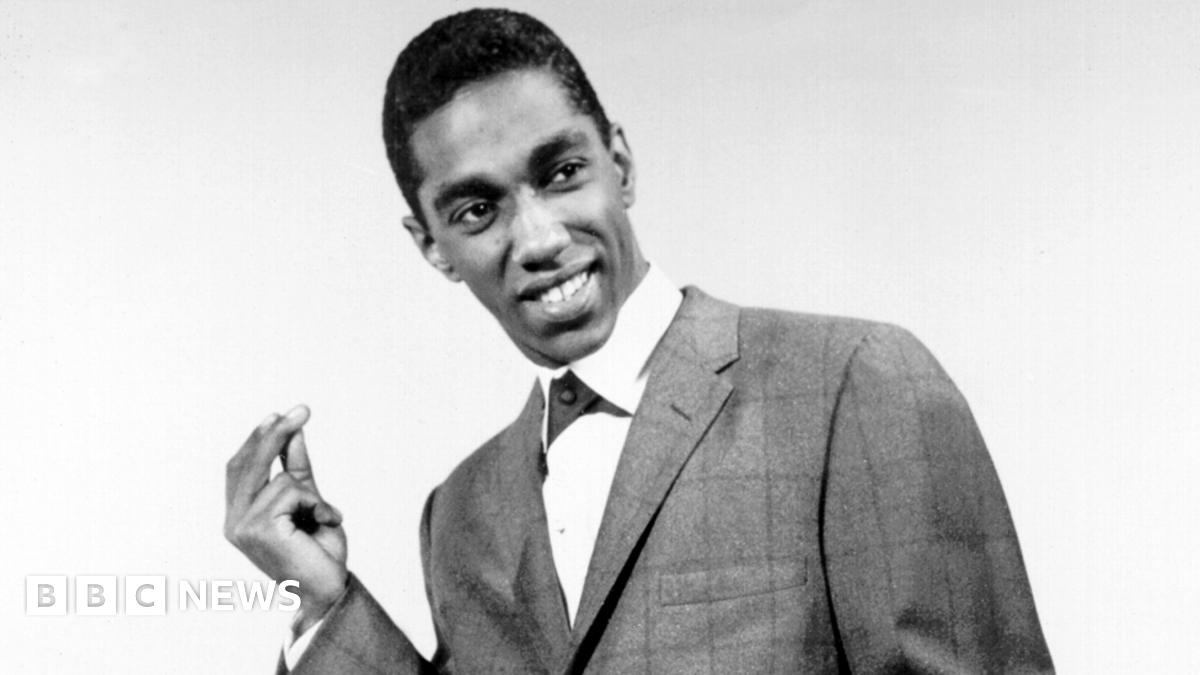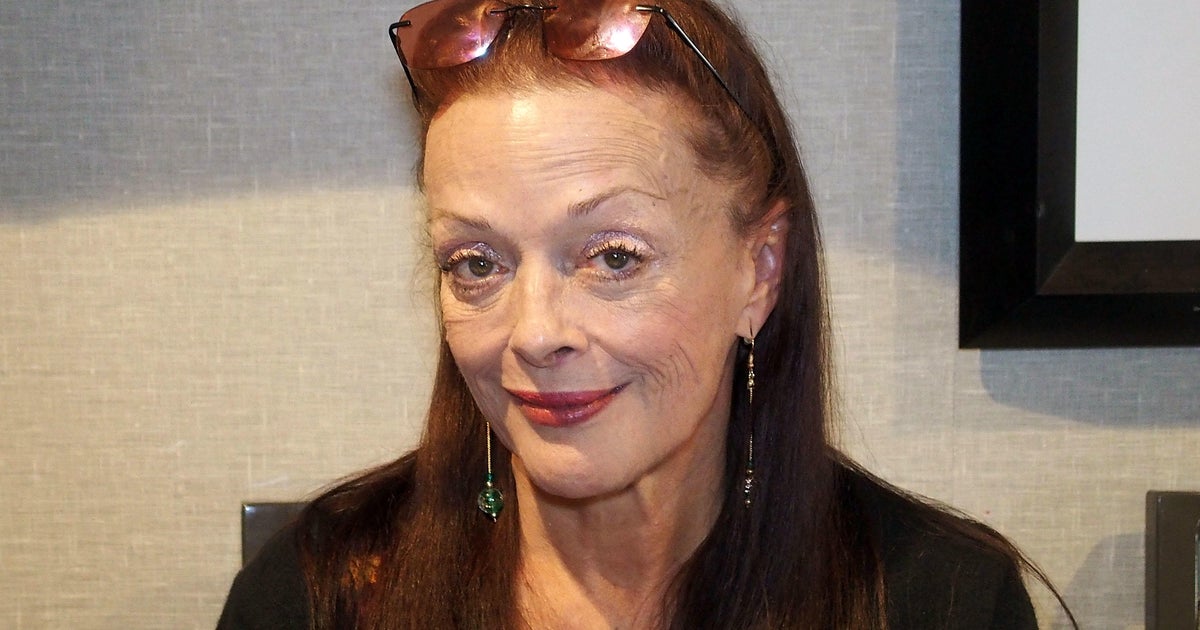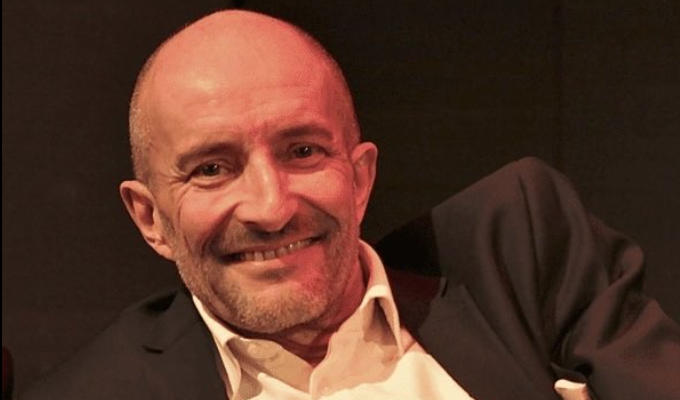The Original Gay Porn Community - Free Gay Movies and Photos, Gay Porn Site Reviews and Adult Gay Forums
-
Welcome To Just Us Boys - The World's Largest Gay Message Board Community
In order to comply with recent US Supreme Court rulings regarding adult content, we will be making changes in the future to require that you log into your account to view adult content on the site.
If you do not have an account, please register.
REGISTER HERE - 100% FREE / We Will Never Sell Your InfoTo register, turn off your VPN; you can re-enable the VPN after registration. You must maintain an active email address on your account: disposable email addresses cannot be used to register.
You are using an out of date browser. It may not display this or other websites correctly.
You should upgrade or use an alternative browser.
You should upgrade or use an alternative browser.
The Death List 2023
- Thread starter unloadonme
- Start date
- Joined
- Dec 31, 2007
- Posts
- 60,594
- Reaction score
- 14,298
- Points
- 113
Autopsy results are not in yet but his family says that he just got out of rehab for prescription med misuse....
The model though. Too young. But he looks like a train wreck.
Addiction sucks.
When I broke my hip, wrist, and shoulder in 2016, I was prescribed Oxycodone. I didn't like it and asked for Aspirin instead. They couldn't do it. Fortunately, I had internet in my room and Googled it. After reading its side effects and addiction rates, I refused to take them anymore. The nurses still brought them to me because they had to and they would sign off on my refusal and took them away again... every few hours.Autopsy results are not in yet but his family says that he just got out of rehab for prescription med misuse.
Addiction sucks.
When I left the hospital after a month, they sent a prescription home with me. I never submitted it to my pharmacy. It's so easy to become addicted. I can understand why so many people become addicted and end up killing themselves.
NotHardUp1
What? Me? Really?
At some point, the fault is in ourselves, not in our stars, that we embrace addiction.
I grew up in a household where Mother was a drunk and abused muscle relaxers and barbiturates. Her boyfriends were drunks. We lived with them, so we saw it all very closely.
Where did Mother pick up the habits? She came of age in the late 40's as a teen. Popular culture, since the end of WWI, had adopted a carpe diem ethos. Work hard? Build up savings? Have a place and a life worth living? Nope. That was a waste, as two world wars proved. Smoke. Wear glamorous and cool clothes. Be seen with cool people. Drink. Take recreational drugs. Lose a job? Well, too bad.
Mother eventually quit drinking, cold turkey, creating suspicion from others that she used alcohol to manipulate boyfriends to get money from them. She died at 71, of emphysema from over 50 years of chain-smoking Kools. No irony there.
And in our small town, we had the more palatable addicts of opiates as well. A couple of doors down was a neighbor whose grandfather had been governor. Her second husband was a pharmacist. She never worked for a living. After a surgery, she indeed became hooked on opiates, but it was a quiet addiction, and she continued for years that way. By the time I came along, she was only a drunk, which had been the pattern of both her late husbands, and indeed, her social strata in our town was filled with alcoholics, as was the country club.
The question becomes, at what point is a predisposition to addiction relevant if one as an adult is ultimately responsible for the decisions and actions one makes and takes? A predispositiont to violence doesn't justify murder.
As we rush headlong into the victimhood equivocations, the due focus is never on the actions of the individual that led to using alcohol, opiates, or whatever as recreational social lubricants. Anyone with an opiate presciption is automatically and unquestioningly slid over into the victim category with NO investigation into whether the person already used alcohol or street drugs even sometimes. It is germane to include drug abuse that precedes prescription abuse.
But, for political and litigious reasons, we won't be seeing that data from objective sources. We'll only get the stacked view, as it excuses both the individual and the society that creates him.
I grew up in a household where Mother was a drunk and abused muscle relaxers and barbiturates. Her boyfriends were drunks. We lived with them, so we saw it all very closely.
Where did Mother pick up the habits? She came of age in the late 40's as a teen. Popular culture, since the end of WWI, had adopted a carpe diem ethos. Work hard? Build up savings? Have a place and a life worth living? Nope. That was a waste, as two world wars proved. Smoke. Wear glamorous and cool clothes. Be seen with cool people. Drink. Take recreational drugs. Lose a job? Well, too bad.
Mother eventually quit drinking, cold turkey, creating suspicion from others that she used alcohol to manipulate boyfriends to get money from them. She died at 71, of emphysema from over 50 years of chain-smoking Kools. No irony there.
And in our small town, we had the more palatable addicts of opiates as well. A couple of doors down was a neighbor whose grandfather had been governor. Her second husband was a pharmacist. She never worked for a living. After a surgery, she indeed became hooked on opiates, but it was a quiet addiction, and she continued for years that way. By the time I came along, she was only a drunk, which had been the pattern of both her late husbands, and indeed, her social strata in our town was filled with alcoholics, as was the country club.
The question becomes, at what point is a predisposition to addiction relevant if one as an adult is ultimately responsible for the decisions and actions one makes and takes? A predispositiont to violence doesn't justify murder.
As we rush headlong into the victimhood equivocations, the due focus is never on the actions of the individual that led to using alcohol, opiates, or whatever as recreational social lubricants. Anyone with an opiate presciption is automatically and unquestioningly slid over into the victim category with NO investigation into whether the person already used alcohol or street drugs even sometimes. It is germane to include drug abuse that precedes prescription abuse.
But, for political and litigious reasons, we won't be seeing that data from objective sources. We'll only get the stacked view, as it excuses both the individual and the society that creates him.
- Joined
- Dec 31, 2007
- Posts
- 60,594
- Reaction score
- 14,298
- Points
- 113
Just to give you some insight into what was happening behind-the-scenes:When I broke my hip, wrist, and shoulder in 2016, I was prescribed Oxycodone. I didn't like it and asked for Aspirin instead. They couldn't do it. Fortunately, I had internet in my room and Googled it. After reading its side effects and addiction rates, I refused to take them anymore. The nurses still brought them to me because they had to and they would sign off on my refusal and took them away again... every few hours.
When I left the hospital after a month, they sent a prescription home with me. I never submitted it to my pharmacy. It's so easy to become addicted. I can understand why so many people become addicted and end up killing themselves.
In the early 90s, marketing people from the pharmaceutical companies started presenting "research" that said that pain was being undertreated. Doctors began writing more liberal pain medication prescriptions. In hospitals, orders for pain medications gave different medications for pain based upon pain scales. If the patient rated their pain with a higher number, they got the pain medications with opiates; patients figured out the system pretty quickly.
They started pushing "pain scales" where the patient was asked to rate their pain numerically. Shortly thereafter, the pharmaceutical companies started distributing materials to put into patient rooms.

Around the same time, regulatory agencies for hospitals and ambulatory surgery centers started reviewing documentation to ensure that, along with vital signs, nurses were charting "pain level".
A 2020 Congressional investigation found that all of these factors were part of the pharmaceutical companies to encourage prescriptions for pain medications for new patented pain medications like Oxycontin.
Purdue Pharma created false advertising documents to provide doctors and patients illustrating that time-released OxyContin was less addictive than other immediate-release alternatives. Furthermore, they sought out doctors who were more likely to prescribe opioids and encourage them to prescribe OxyContin because it was safe. They did this because OxyContin quickly became a cash cow for the company....
Documents obtained by our committee by the Department of Justice and by state attorneys general say that members of the family were directly involved with the day-to-day operations of the company. And they launched an incredibly destructive, reckless campaign to flood our communities with dangerous opioids.
At the behest of the Sackler family, Purdue targeted high-volume prescribers to boost sales of OxyContin, ignored and worked around safeguards intended to reduce prescription opioid misuse, and promoted false narratives about their products to steer patients away from safer alternatives and deflect blame toward people struggling with addiction. And most despicably, Purdue and the Sacklers worked to deflect the blame for all that suffering away from themselves and on to the very people struggling with the OxyContin addiction.
Many of these increasing deaths that we're seeing from opiate overdose started with prescriptions for pain medications that led to addiction.
In the case of Jeremy Ruehlemann, his father gave interviews saying that Jeremy had died of an overdose. He had been fighting addiction to opiates that had begun with a prescription for Percocet (which contains a smaller dose of oxycodone, the same drug that is in OxyContin).

Jeremy Ruehlemann's father reveals model had painkiller addiction
Jeremy Ruehlemann's father Achim has confirmed his cause of death in an exclusive interview with DailyMail.com, a day after the young model's death was announced.
- Joined
- Dec 4, 2006
- Posts
- 118,253
- Reaction score
- 28,054
- Points
- 113
In the late 1990's I was working on a project that connected me with the Chair of the Board of a teaching hospital who also had a lot of high flying brothers.
The message was...'no one should have to live in pain'.
And it was almost like listening to the pitch from the oxy manufacturers...that everyone deserved a non-addictive release from acute and chronic pain.
At the time I remember saying that I would be be very cautious in promoting this. Sometimes pain can be informative. But I did Love and I mean LOVE oxy. We had a scrip for tablets that were kept on a shelf and in the event of an acute episode of pain (like kidney stones) were cracked open until we got to the Emerg.. But I remember telling a friend on-line that I had a resistance to Oxy because it just made me feel stupid.
And then with an horrific bout of pneumonia/bronchitis/godknowswhat i was prescribed Oxycodone and went through a one week supply in less than 72 hours and sitting in the Doc's office and crying and telling him that I wasn't jagged on it...just find me anything that would work.
I was so relieved when Ontario just cracked totally down on Oxy. Years ahead of the US.
The message was...'no one should have to live in pain'.
And it was almost like listening to the pitch from the oxy manufacturers...that everyone deserved a non-addictive release from acute and chronic pain.
At the time I remember saying that I would be be very cautious in promoting this. Sometimes pain can be informative. But I did Love and I mean LOVE oxy. We had a scrip for tablets that were kept on a shelf and in the event of an acute episode of pain (like kidney stones) were cracked open until we got to the Emerg.. But I remember telling a friend on-line that I had a resistance to Oxy because it just made me feel stupid.
And then with an horrific bout of pneumonia/bronchitis/godknowswhat i was prescribed Oxycodone and went through a one week supply in less than 72 hours and sitting in the Doc's office and crying and telling him that I wasn't jagged on it...just find me anything that would work.
I was so relieved when Ontario just cracked totally down on Oxy. Years ahead of the US.
Tom Verlaine (Thomas Miller), singer and songwriter, aged 73.



 en.m.wikipedia.org
en.m.wikipedia.org


Television frontman Tom Verlaine dies at 73
His band rose to fame in the 1970s New York punk scene, scoring UK hits including Marquee Moon.
www.bbc.co.uk

Tom Verlaine - Wikipedia
NotHardUp1
What? Me? Really?
Many of these increasing deaths that we're seeing from opiate overdose started with prescriptions for pain medications that led to addiction.
In the case of Jeremy Ruehlemann, his father gave interviews saying that Jeremy had died of an overdose. He had been fighting addiction to opiates that had begun with a prescription for Percocet (which contains a smaller dose of oxycodone, the same drug that is in OxyContin).
Although the specific precursor for overdose may be an opiate prescription, that is by no means the proven cause of the behavioral cause of addiction. All that factoid establishes is that a legal access to an opiate prescription eventually led to a fatal overdose.
Whether considering Jeremy Ruehlemann, or any other addict, a grieving (and possibly litigious) father's comment doesn't erase the behavioral history of an individual and his possible use of recreational drugs and/or alcohol. Had the man ever taken opiates before without prescription? Although his loss is indeed tragic, it is by no means clear what his pattern of use had been.
The accusation that a prescription killed a high-flying fashion model might have credence if said model had never smoked, smoked weed, gotten drunk, tried shrooms, taken ecstasy, or done one of the myriad party drugs the jet set is known for. The Amish don't typically go into fashion modelling. Ruehlemann may have been an ascetic, but very unlikely.
The push to make every overdosed person, especially the famous and young and beautiful, a hapless victim, is a social ill to itself. In an era in which there is a near frenzy in popular culture to frame obesity and its deadly consequences as the responsibility of the eater, it is highly contradictory to work assiduously to remove any accountability from recreational drug users.
NotHardUp1
What? Me? Really?
And, as for Congressional investigations, we have every confidence that the AMA wouldn't point fingers at itself as the ultimate party to blame. No, it must be that big old rich pharma family, the Sith, and their magic pills. What horseshit. Congress has been the AMA's bitch for decades.
Anthony "Top" Topham, guitarist, aged 75.


 www.dailymail.co.uk
www.dailymail.co.uk
 en.m.wikipedia.org
en.m.wikipedia.org


Yardbirds guitarist Anthony 'Top' Topham dies aged 75
Anthony 'Top' Topham, founding guitarist of the Yardbirds, left the band before their commercial breakthrough and was succeeded by Eric Clapton, then Jeff Beck and finally Jimmy Page.
Top Topham - Wikipedia
Dick Savitt, tennis player, aged 95.


 www.theguardian.com
www.theguardian.com

 en.m.wikipedia.org
en.m.wikipedia.org


Dick Savitt obituary
Wimbledon men’s champion in 1951 who was caught up in a media storm as part of the Davis Cup team the following year

Dick Savitt - Wikipedia
Barrett Strong, singer and songwriter, aged 81.


 www.bbc.co.uk
www.bbc.co.uk

 en.m.wikipedia.org
en.m.wikipedia.org


Barrett Strong: Motown trailblazer and hitmaker, dies at 81
Barrett Strong scored Motown's first major hit and went on to write I Heard It Through The Grapevine.

Barrett Strong - Wikipedia
Annie Wersching, actress, from cancer at 45.


 www.bbc.co.uk
www.bbc.co.uk

 en.m.wikipedia.org
en.m.wikipedia.org


Annie Wersching: The Last of Us video game and 24 actress dies at 45
Tributes are paid to Annie Wersching, who also featured in TV shows 24 and Star Trek: Picard.

Annie Wersching - Wikipedia
gaysian85
Sex God
Lisa Loring who played Wednesday Addams in the 60s The Addams Family has died at age 64. She was also once married to straight porn star Jerry Butler and did makeup on sets of porn movies. Sad that John Astin is the sole surviving cast member of 60s The Addams Family. He might not have much time left himself due to his own age.

 www.cbsnews.com
www.cbsnews.com

Lisa Loring, who played Wednesday Addams in classic 1960s sitcom "The Addams Family," dies at 64
Loring had the role in the classic 1960s sitcom, which was the original version of "The Addams Family."
- Joined
- Dec 31, 2007
- Posts
- 60,594
- Reaction score
- 14,298
- Points
- 113
One of her last roles was as the Borg Queen in Season 2 of Picard:Annie Wersching, actress, from cancer at 45.


Annie Wersching: The Last of Us video game and 24 actress dies at 45
Tributes are paid to Annie Wersching, who also featured in TV shows 24 and Star Trek: Picard.www.bbc.co.uk

Annie Wersching - Wikipedia
en.m.wikipedia.org

Kyle Smaine, skier, killed in an avalanche aged 31.


 www.bbc.co.uk
www.bbc.co.uk
 en.m.wikipedia.org
en.m.wikipedia.org


Ex-world champion skier Smaine dies in avalanche
Former US world champion freestyle skier Kyle Smaine dies in an avalanche in Japan.
Kyle Smaine - Wikipedia
bluestar1079
JUB 10k Club
Cindy Williams from "Laverne & Shirley"


 apnews.com
apnews.com


'Laverne & Shirley' actor Cindy Williams dies at 75
LOS ANGELES (AP) — Cindy Williams, who was among the most recognizable stars in America in the 1970s and 80s for her role as Shirley opposite Penny Marshall's Laverne on the beloved sitcom "Laverne & Shirley," has died, her family said Monday.
Kit Hesketh-Harvey, screenwriter and composer, aged 65.


 www.theguardian.com
www.theguardian.com

 en.m.wikipedia.org
en.m.wikipedia.org


Kit Hesketh-Harvey, screenwriter, composer and lyricist, dies aged 65
The British entertainer said to be a favourite of King Charles, whose credits ranged from Merchant Ivory and opera to The Vicar of Dibley, has died

Kit Hesketh-Harvey - Wikipedia
bluestar1079
JUB 10k Club
Actress Melinda Dillon best known as Ralphie's mom in "A Christmas Story" and "Close Encounters of the Third Kind".


 www.hollywoodreporter.com
www.hollywoodreporter.com


Melinda Dillon, Actress in ‘Close Encounters of the Third Kind’ and ‘A Christmas Story,’ Dies at 83
A two-time Oscar nominee, she also appeared in 'Bound for Glory,' 'Slap Shot' and on Broadway in 'Who's Afraid of Virginia Woolf?'



